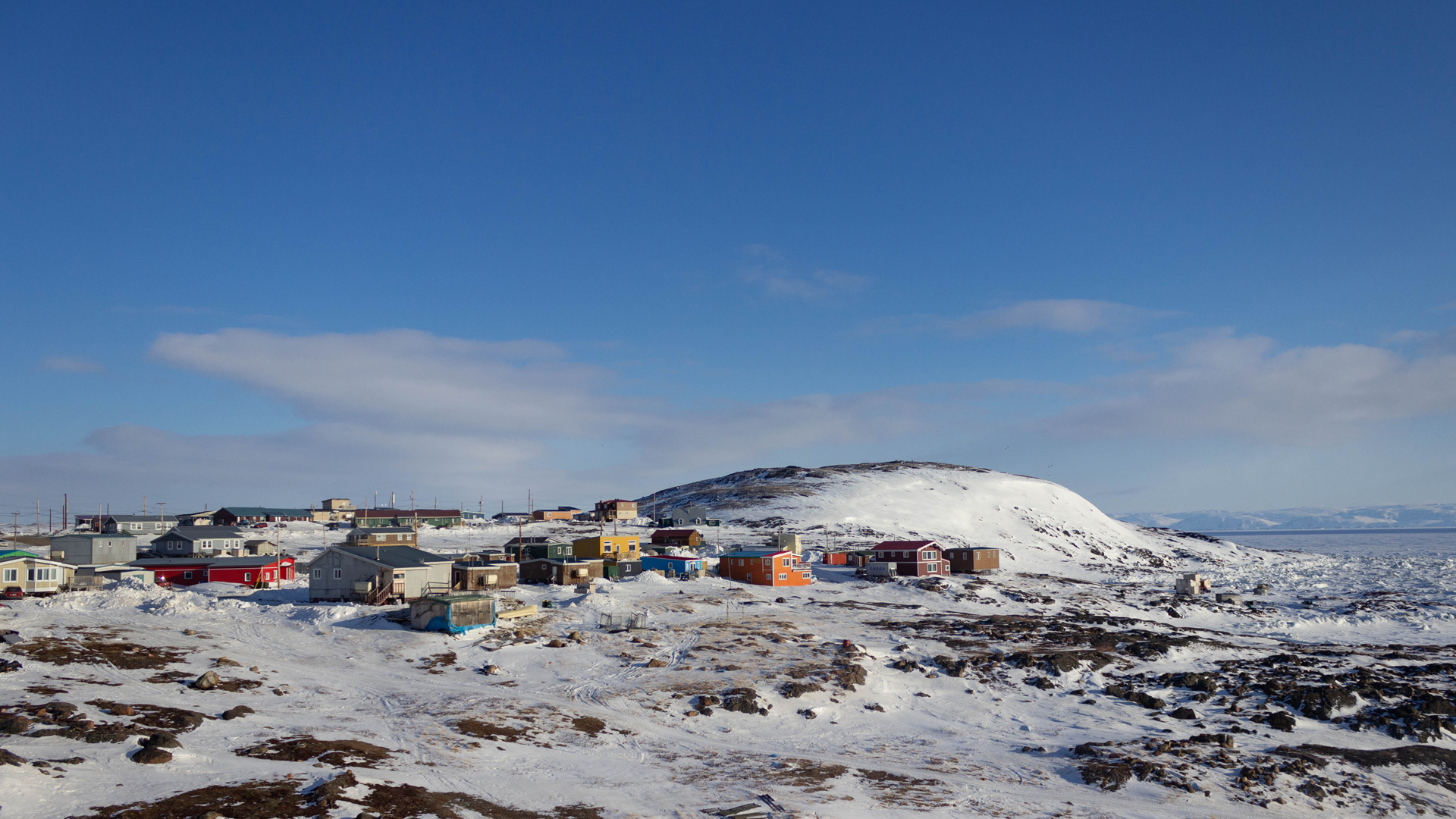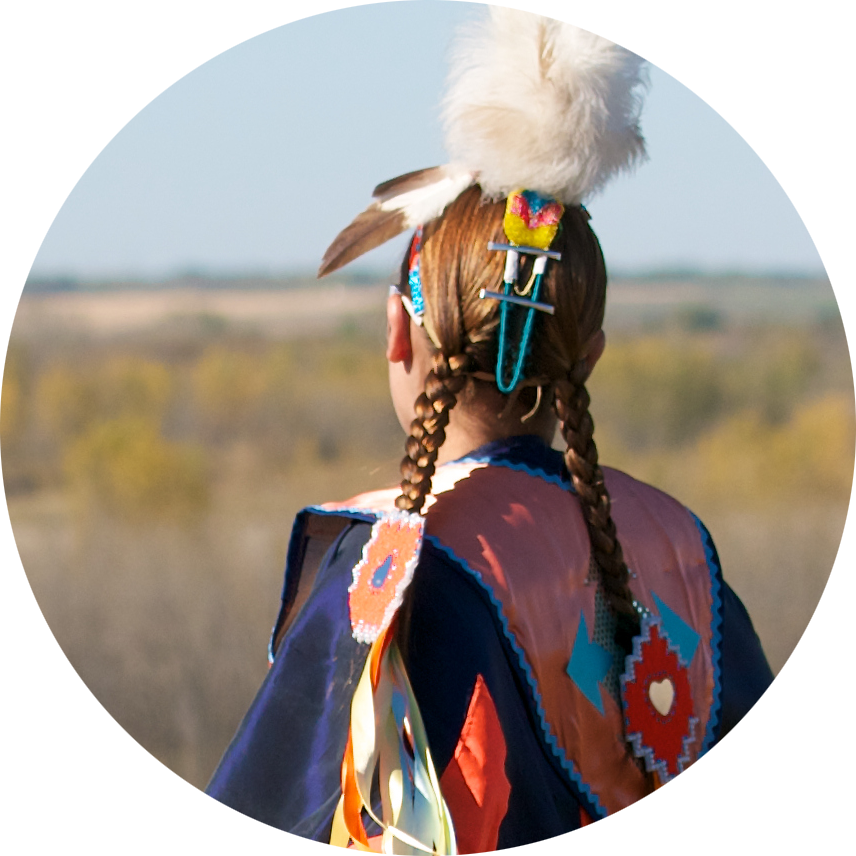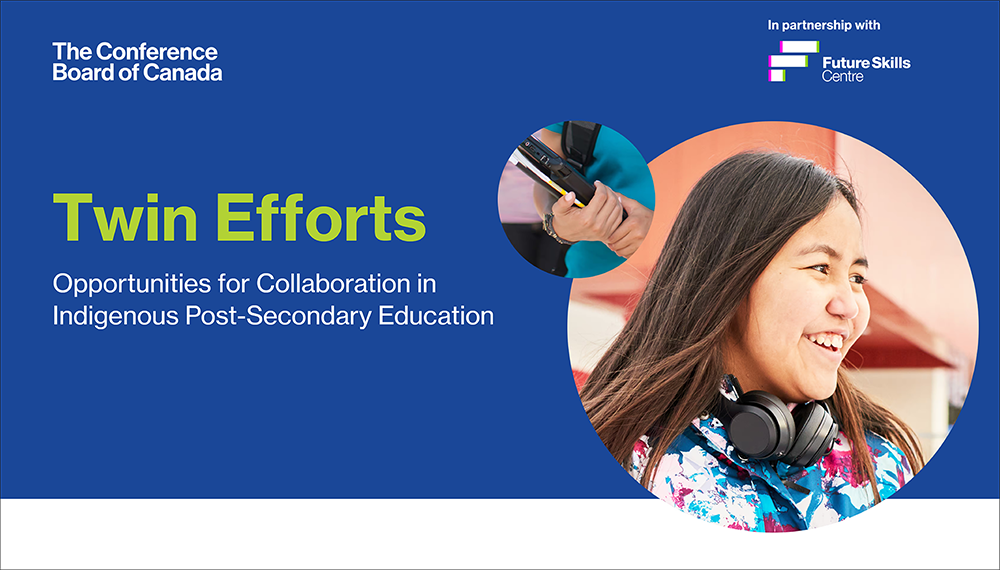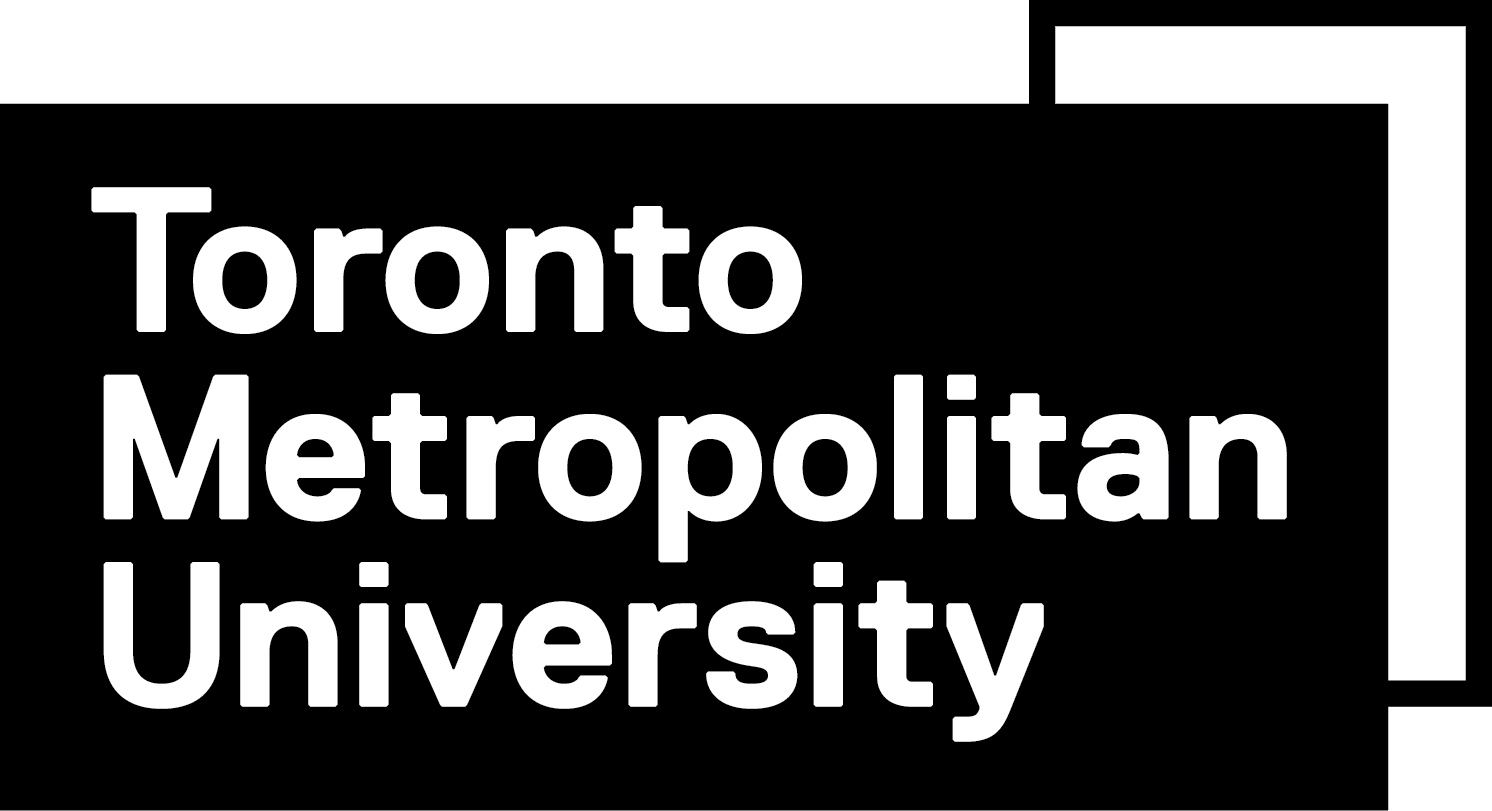
Old School New School
Comparing Indigenous-Centered Post-Secondary Education in Canada

Français • March 26, 2020
In 1972, the National Indian Brotherhood—now known as the Assembly of First Nations—launched a movement by First Nations to reclaim control of their education.
Fifty years on, many forms of Indigenous-centred post-secondary education (PSE) exist in Canada.
All of them aspire to help Indigenous students succeed.
But to date, no one has done a comprehensive study of Indigenous-centred post-secondary education in Canada.

On behalf of the Future Skills Centre, The Conference Board of Canada is comparing different forms of Indigenous-centred PSE.
Through this research, we’ll explore these approaches to understand their advantages and limitations for Indigenous post-secondary students, their communities, and their employers.
What do the Truth and Reconciliation Commission and the United Nations say about Indigenous education?
The Truth and Reconciliation Commission of Canada’s 10th Call to Action includes:
“improving education attainment levels and success rates” and “enabling parental and community responsibility, control, and accountability.”
Article 14.1 of the 2007 United Nations Declaration on the Rights of Indigenous Peoples (UNDRIP) asserts that:
Indigenous peoples have the right to establish and control their educational systems and institutions providing education in their own languages, in a manner appropriate to their cultural methods of teaching and learning.

Both the TRC and UNDRIP endorse Indigenous-centred education. Inspired by them, PSE institutions and governments at all levels in Canada have committed to work with Indigenous communities to serve their learners better.
To introduce new policies and funding, decision-makers in these institutions need to understand the processes, practices, and outcomes of Indigenous-centred PSE.
Examples of Indigenous-centred PSE
Click through to learn more:
Independent Indigenous institutes
When residential schools began closing in the 1970s, some Indigenous communities reclaimed the abandoned buildings as an act of taking back control of their education. They re-purposed these school buildings to establish Indigenous institutes.
Examples include University nuhelot’įne thaiyots’į nistameyimâkanak Blue Quills, Old Sun Community College, and Red Crow Community College—all in Alberta.
In the same spirit of taking control of Indigenous PSE, more than 80 other institutes are now established in communities across central and western Canada, serving First Nations and Métis populations.
Indigenous colleges within mainstream institutions
In the Maritimes, some Indigenous colleges are embedded within university structures.
Long-standing examples, like Unama’ki College at the University of Cape Breton and the Mi’kmaq-Wolastoqey Centre at the University of New Brunswick, deliver unique Indigenous programs within the framework of their host university.
These colleges run with input from Indigenous advisory councils, but ultimately remain under the control of the university’s board of governors.
Indigenous-owned university
The First Nations University of Canada (FNUniv) is unique in Canada. It is the only First Nations-controlled university-college.
FNUniv was established in 1976 through a federation agreement between the Federation of Saskatchewan Indian Nations and the University of Regina.
FNUniv receives funding from both the Saskatchewan and federal governments. It is the only Indigenous-controlled member of Universities Canada.
De facto Indigenous-centred public PSE
Some public PSE institutions are Indigenous-centred or -controlled due to a majority Indigenous population base and/or student body.
All three public colleges in the territories serve and represent large Indigenous populations.
In the provinces, almost three-quarters of the student body is Indigenous at the University College of the North, in northern Manitoba. Similarly, nearly half the students are Indigenous at Coast Mountain College, in northwest British Columbia. Both colleges are guided by councils of Indigenous leaders.
These councils connect the college to the Indigenous communities they serve and advise on supporting Indigenous students.
Public college supporting private institutes
The Nicola Valley Institute of Technology (NVIT) is the public community college dedicated to Indigenous learners in British Columbia.
NVIT acts as a hub for more than 40 private Indigenous institutes around the province. It collaborates with these smaller institutes to deliver accredited college programs.
In turn, NVIT is affiliated with several British Columbia universities, and partners with them to offer accredited university programs to its students.
Legislating a third pillar
In 2017, Ontario passed the Indigenous Institutes Act.
The Act recognizes and enables the accreditation of nine Indigenous institutes as a third pillar of PSE—alongside universities and colleges—in the province.
These institutes will be accredited by a new Indigenous-controlled council and will be publicly funded. They may deliver stand-alone programs or partner with other colleges and universities.
Indigenizing mainstream PSE
Mainstream post-secondary institutions are Indigenizing.
Some Canadian universities—such as Trent University in Ontario—began rethinking their approach to Indigenous learners and Indigenous knowledge as early as the 1960s. However, it was only after the release of the TRC report in 2015 that most mainstream institutions started publishing comprehensive plans for Indigenization.
Sixty-five per cent of Universities Canada members now report they are starting to incorporate Indigenous knowledge and ways of learning into their research, policies, and programs. And nearly half of College and Institutes Canada members have signed the association’s Indigenous Education Protocol.
In practice, this has resulted in a wide range of initiatives—but formal commitments to decolonize PSE institutions by remaking academic structures and curricula are still rare.
Transforming university access in the North
Canada’s Northern residents have limited local access to university programs, but that is changing.
In 2017, prominent Inuit leader Mary Simon called for federal, territorial, and Northern Indigenous governments to work together on an Arctic university. Given the large Indigenous populations in the territories, Northern Indigenous leaders expect that any Arctic university would be a centre of excellence for Indigenous-centred PSE.
- Yukon College will officially become Yukon University in May 2020.
- The Northwest Territories is converting Aurora College a polytechnic university.
- In November 2019, Nunavut Arctic College signed a 10-year agreement with Memorial University of Newfoundland.
How will these moves shape the vision of an Arctic University?

Where do we go from here?
We are The Conference Board of Canada’s Indigenous and Northern Communities team.
On behalf of the Future Skills Centre, we want to understand how Indigenous-centred PSE contributes to Indigenous student success. We will:
- catalogue Indigenous-centred PSE initiatives across Canada
- identify leading approaches to Indigenous-centred PSE in Canada, looking at inputs such as governance, funding, and accreditation processes
- compare the strengths and weaknesses of each approach, looking at outputs such as sustainable staffing, student services, and breadth and depth of programs
- explore these initiatives’ long-term impacts on graduates, their communities, and the country

For a deeper look, read the research:
Twin Efforts: Opportunities for Collaboration in Indigenous Post-Secondary Education
December 7, 2020





